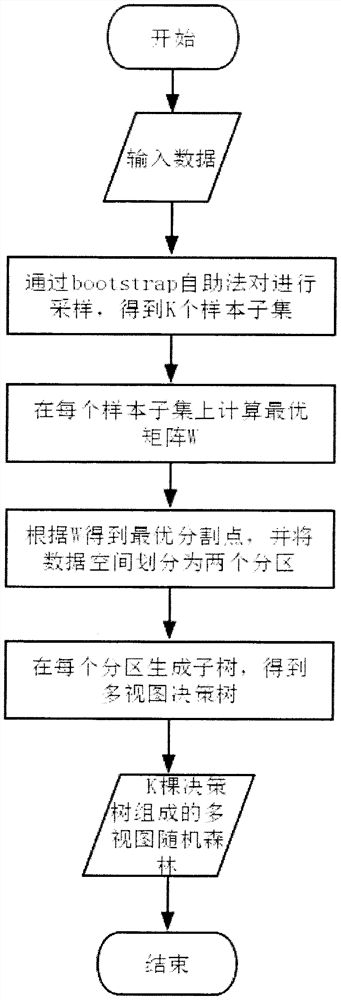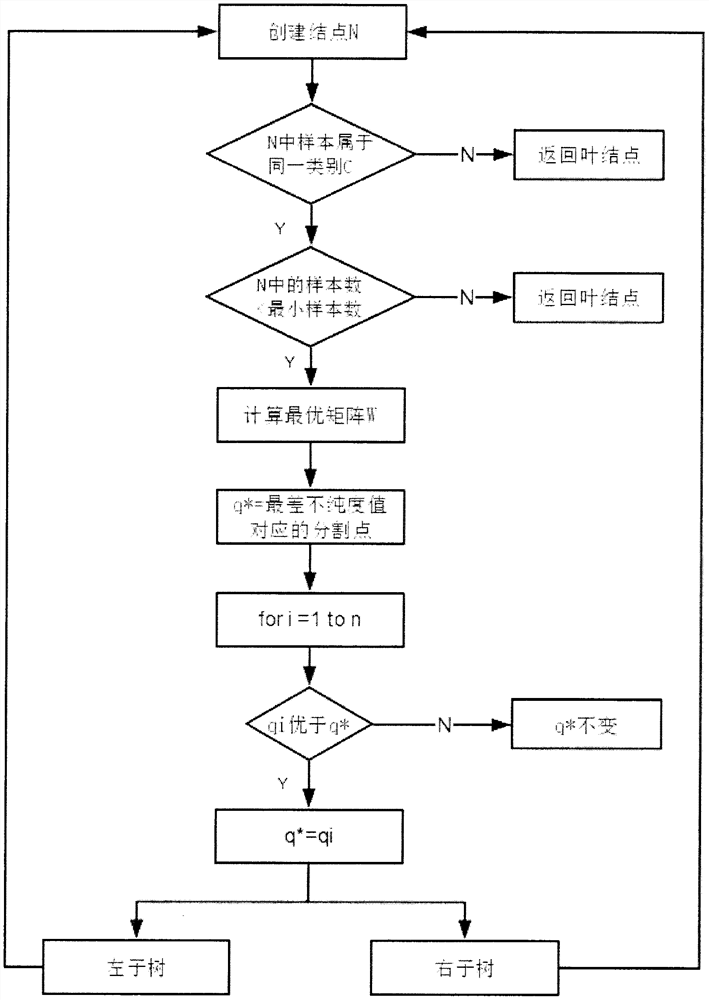Multi-view learning algorithm based on random forest
A random forest and learning algorithm technology, applied in the field of multi-view learning based on random forest, which can solve the problems of incomplete utilization of multi-view correlation and waste of information resources.
- Summary
- Abstract
- Description
- Claims
- Application Information
AI Technical Summary
Problems solved by technology
Method used
Image
Examples
Embodiment Construction
[0022] The technical content of the present invention will be further described below in conjunction with the accompanying drawings. The experimental data in this specific embodiment are all from real data sets in the UCI standard database. In order to generate the two-view data, we cut the D-dimensional samples according to the related work method. features of one dimension as the first view, and other dimensions as the second view.
[0023] attached figure 1 The flow chart of the two-view learning algorithm based on random forest mentioned in the present invention is shown, which specifically includes the following steps:
[0024] Step 1: Fusion of two-view data
[0025] Suppose {(x i ,y i )∈R p × R q} is a set of two-view sample sets, let the data matrix
[0026] X=[x 1 ,...,x n ]∈R p×n , Y=[y 1 ,...,y n ]∈R q×n
[0027] Datasets representing the two views respectively.
[0028] Using discriminant analysis to calculate the optimal matrix W, so that the inter...
PUM
 Login to View More
Login to View More Abstract
Description
Claims
Application Information
 Login to View More
Login to View More - R&D
- Intellectual Property
- Life Sciences
- Materials
- Tech Scout
- Unparalleled Data Quality
- Higher Quality Content
- 60% Fewer Hallucinations
Browse by: Latest US Patents, China's latest patents, Technical Efficacy Thesaurus, Application Domain, Technology Topic, Popular Technical Reports.
© 2025 PatSnap. All rights reserved.Legal|Privacy policy|Modern Slavery Act Transparency Statement|Sitemap|About US| Contact US: help@patsnap.com



